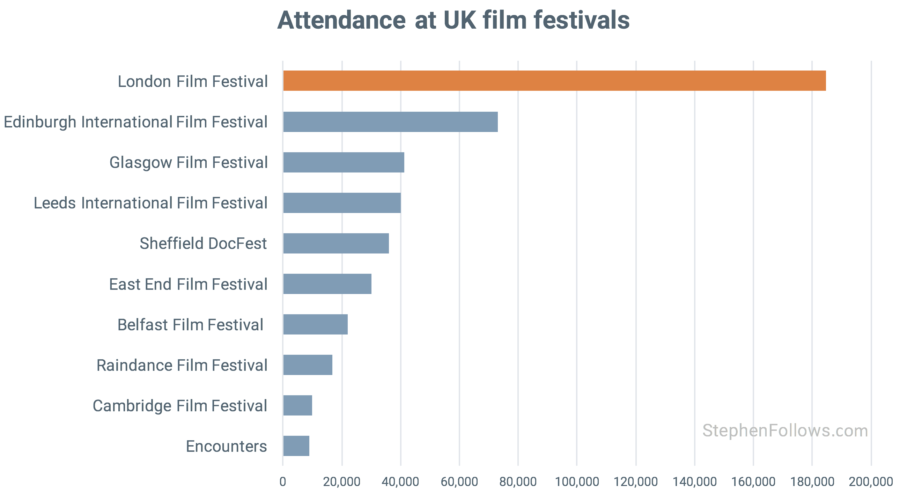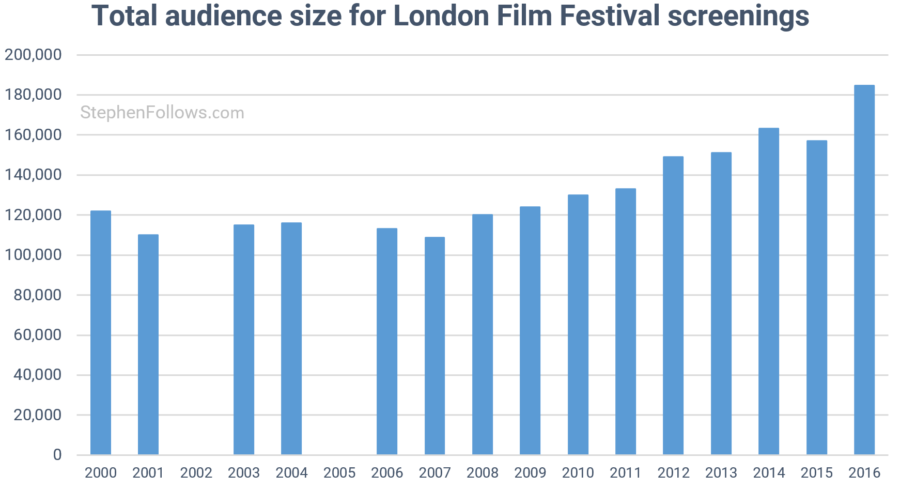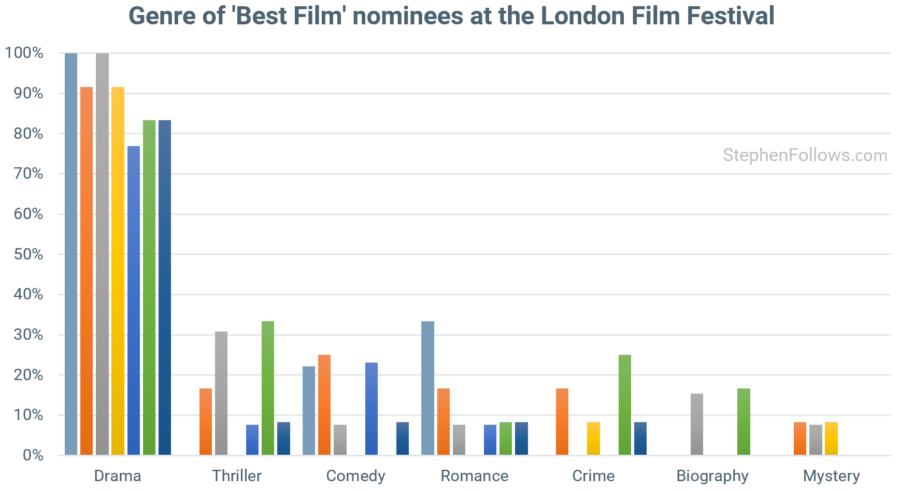 The 61st annual London Film Festival kicks off this week, with a programme of 242 feature films from 67 countries around the world.
The 61st annual London Film Festival kicks off this week, with a programme of 242 feature films from 67 countries around the world.
So I thought I’d take a quick look at the festival and its films.
The London Film Festival by numbers
Last year, the London Film Festival screened to a total audience of 184,000 people, making it the UK’s largest film festival by a big margin.

And it’s growing; the 2016 attendance figure is 70% higher than a decade ago.

Note: I could not find the figures for 2002 and 2005 but the festival did run.
Good value
One possible reason for this large attendance is that tickets compare favourably with average cinema ticket prices in London. A few years ago, I looked at the average price of cinema tickets in London and an off-peak festival ticket is actually lower than the comparable off-peak average (£9.00 for the festival and £10.05 normally).

That’s not to say that all festival tickets are cheap. If you want to see a festival screening at the Embankment Garden Cinema with hospitality at the Savoy Hotel then you’ll have to shell out £354 per ticket. This includes a “premium” ticket, champagne, dinner and a chance to walk the red carpet with the cast and crew.
Drama queens
Almost nine out of ten films nominated for the London Film Festival ‘Best Film’ award is a drama. By using IMDb’s genre classification (where each film can have up to three genres), we can see that the second most popular genre is Thriller, accounting for 14% of the films.

BFI Favouritism?
The BFI owns and runs the festival and it’s an interesting quirk of the data that, until very recently, films with BFI funding seemed to have a much easier time gaining ‘Best Film’ nominations than most.
Between 2011 and 2015, the BFI provided some sort of funding towards 9% of the films shot in the UK. Over this same period, 59% of the British films nominated for Best Film at the London Film Festival had received some BFI funding. One possible argument for why BFI films do so well at the BFI London Film Festival could be that the BFI is good at identifying and backing quality films. While this is certainly true overall, it doesn’t seem to be enough to explain the full trend.
Of the Best Film nominees, the average IMDb user scores for BFI-backed nominees is markedly lower than nominees who didn’t receive BFI backing. This could suggest that when a film receives BFI funding, it has an easier time getting nominated at the BFI London Film Festival.

It’s worth noting that we’re talking about a small number of films and that none of the Best Film nominees in either 2016 or 2017 had BFI funding. This finding could also theoretically be caused by the people awarding BFI money and the people selecting LFF films having the exact same creative tastes – meaning that they independently favour the same films.
Notes
The data for today’s piece came from a large variety of sources. The BFI don’t publish easy tables or charts on the festival’s numbers so I had to crib much of it from old press releases and annual reports.
The attendance figures for other festivals was taken from their own press releases and websites so we can’t know how accurate they are. Some festivals didn’t say which year their figure related to but when there were multiple years, I opted for the 2016 figure.





Comments
Hi there,
Really love this page! Would you happen to know the TOTAL number of attendances to all registered UK festivals over a year?
Hi Paul. Glad you enjoyed it. What do you mean by registered festivals? There is no registration or approval needed to run one. On the low end there are quite a few small festivals who don’t share data.